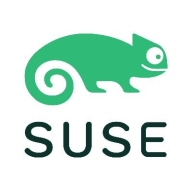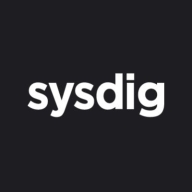

Sysdig Secure and SUSE NeuVector operate in the advanced security platform category. Users believe SUSE NeuVector holds the upper hand due to its comprehensive features and value-driven pricing.
Features: Sysdig Secure offers comprehensive monitoring, deep visibility into container environments, and Kubernetes insights. SUSE NeuVector provides robust runtime security, extensive policy enforcement, and strong feature sets.
Room for Improvement: Sysdig Secure needs better documentation, improved alerting features, and enhanced user support. SUSE NeuVector could improve scalability, tool integration, and customer support efficiency.
Ease of Deployment and Customer Service: Sysdig Secure is straightforward to deploy and has responsive customer support. SUSE NeuVector also has a good deployment experience but has mixed feedback on customer service.
Pricing and ROI: Sysdig Secure has a reasonable initial setup cost but mixed ROI. SUSE NeuVector has higher pricing but delivers strong ROI due to its robust features.
| Product | Market Share (%) |
|---|---|
| Sysdig Secure | 2.7% |
| SUSE NeuVector | 2.3% |
| Other | 95.0% |


| Company Size | Count |
|---|---|
| Small Business | 5 |
| Midsize Enterprise | 1 |
| Large Enterprise | 2 |
| Company Size | Count |
|---|---|
| Small Business | 5 |
| Midsize Enterprise | 2 |
| Large Enterprise | 3 |
SUSE NeuVector is a full lifecycle container security solution that helps your organization secure its container infrastructures, manage Kubernetes security risks, and block threats. The NeuVector continuous container security and compliance platform simplifies data protection from pipeline to production, enforces compliance, and provides complete visibility and automated controls for protection against known and unknown threats. In addition, NeuVector is the only Kubernetes-native container security solution that offers a comprehensive risk profile of known vulnerabilities and also delivers immediate protection from all vulnerabilities.
SUSE NeuVector Features
SUSE NueVector has many valuable key features. Some of the most useful ones include:
SUSE NeuVector Benefits
There are many benefits to implementing NeuVector. Some of the biggest advantages the solution offers include:
Reviews from Real Users
A Platform Solution Architect at a tech services company says, “The solution is feature-rich, easy to set up, and has good support.”
In the cloud, every second counts. Attacks move at warp speed, and security teams must protect the business without slowing it down. Sysdig stops cloud attacks in real time, instantly detecting changes in risk with runtime insights, a unique AI architecture, and open source Falco. Sysdig delivers live visibility by correlating signals across cloud workloads, identities, and services to uncover hidden attack paths. By knowing what is running, teams can prioritize the vulnerabilities, misconfigurations, permissions, and threats that matter most. From prevention to defense, Sysdig helps enterprises move faster and focus on what matters: innovation.
Sysdig. Secure Every Second.
We monitor all Container Security reviews to prevent fraudulent reviews and keep review quality high. We do not post reviews by company employees or direct competitors. We validate each review for authenticity via cross-reference with LinkedIn, and personal follow-up with the reviewer when necessary.